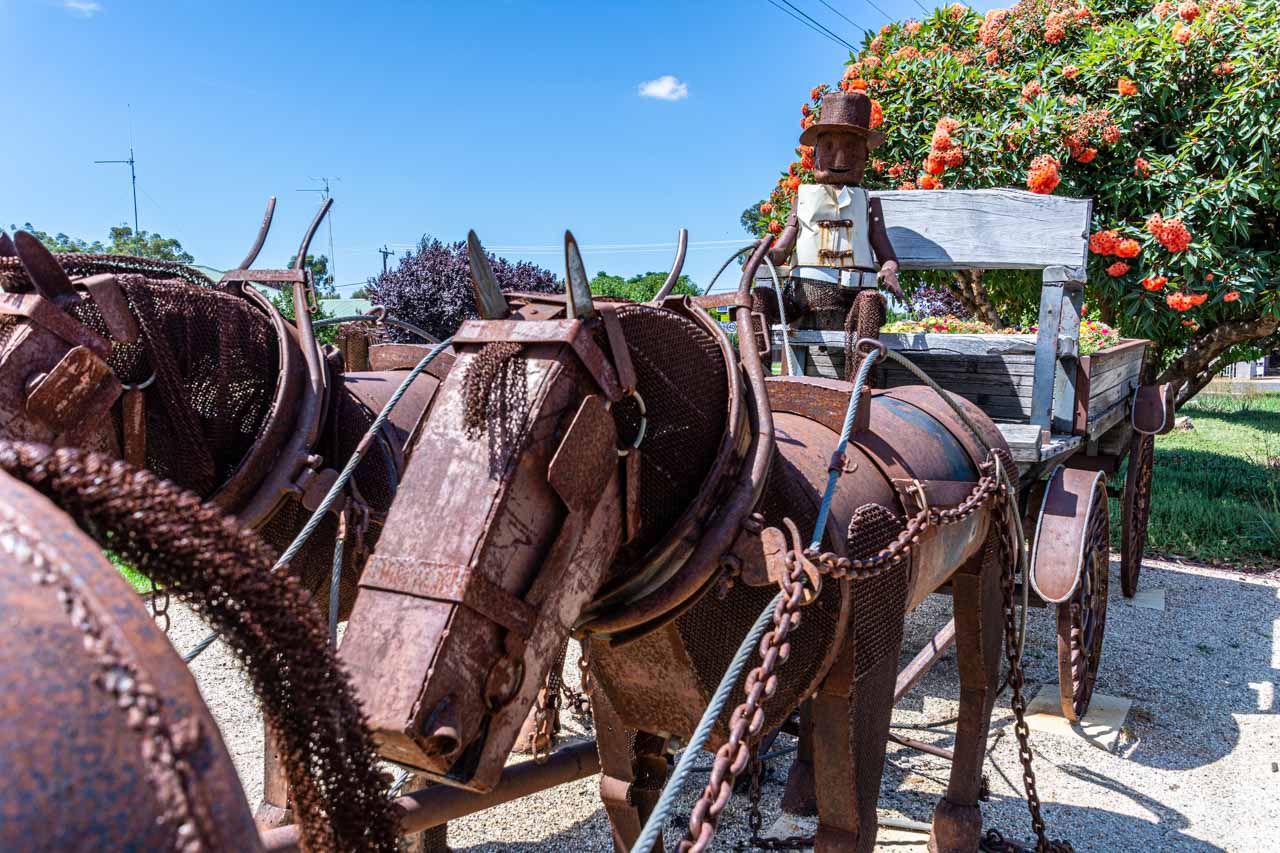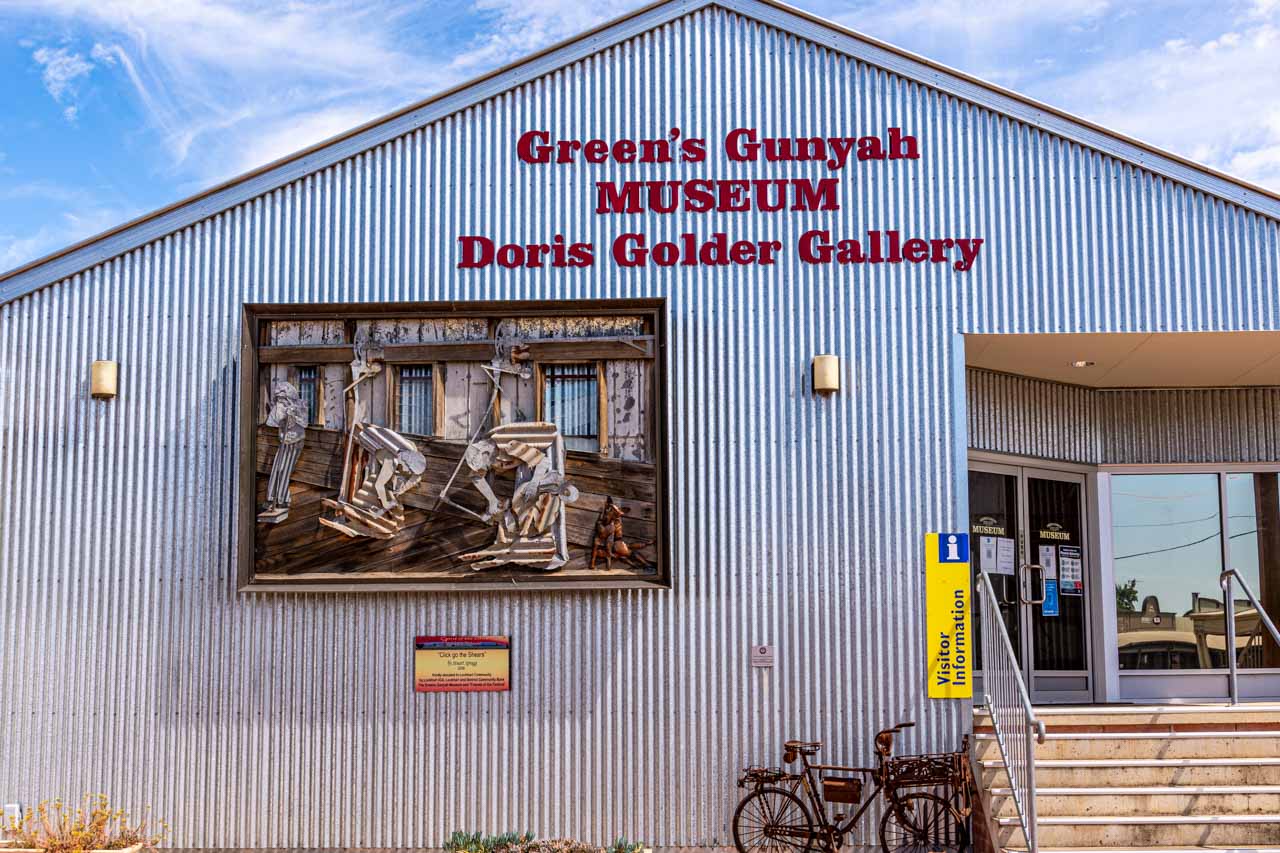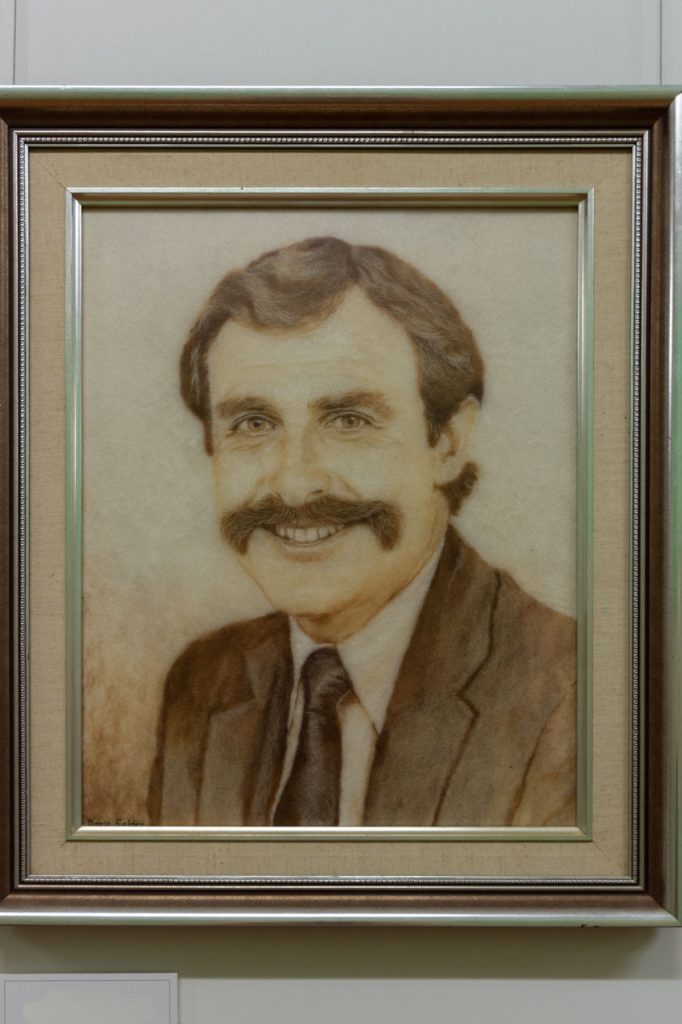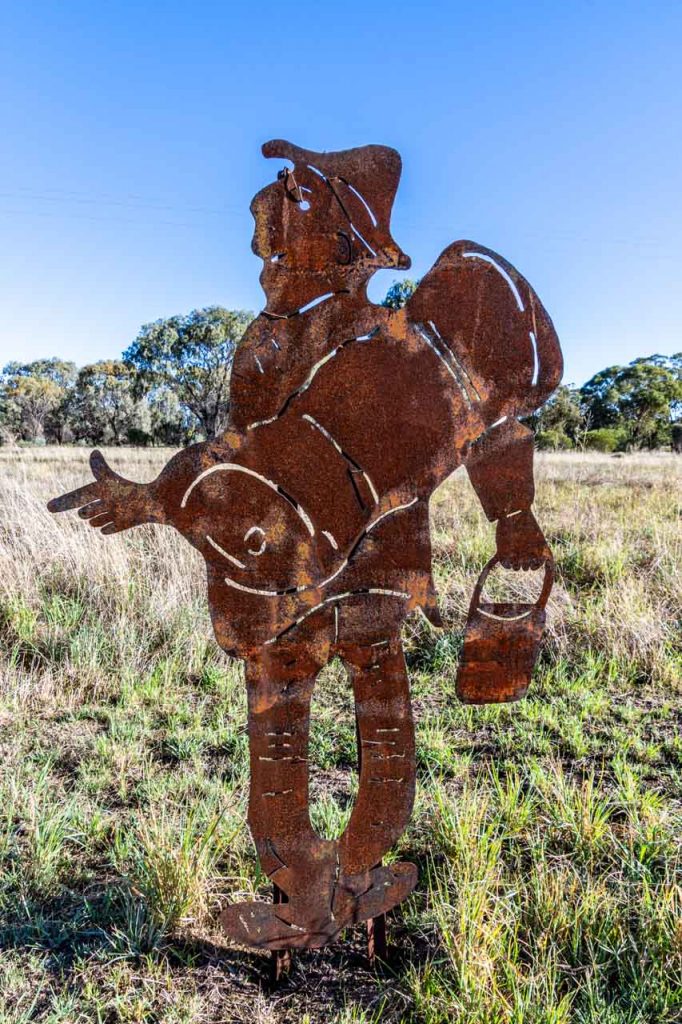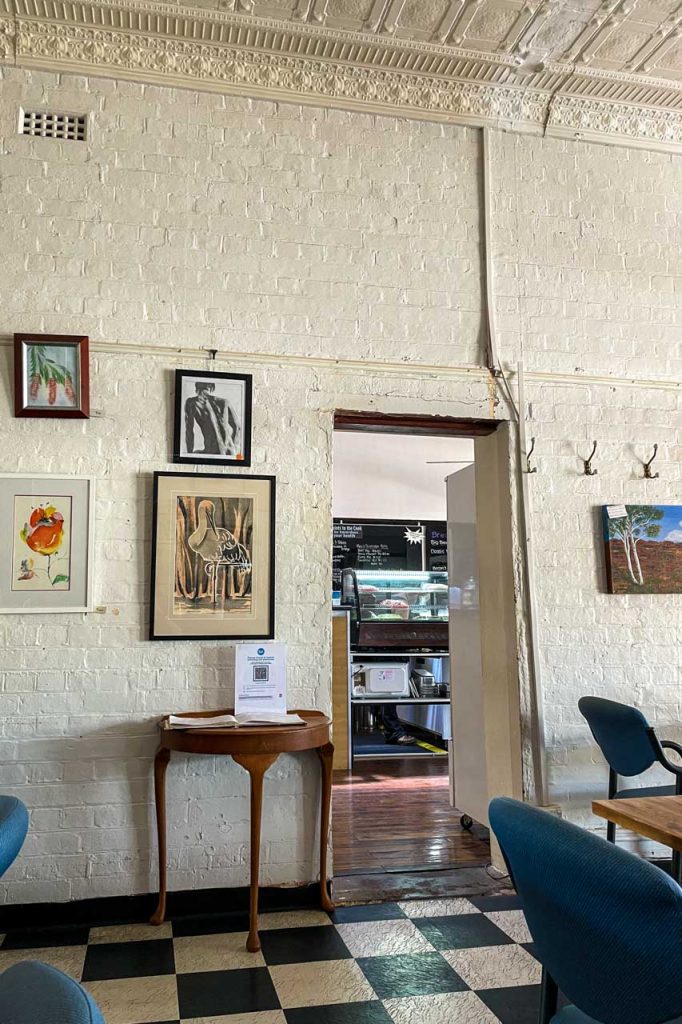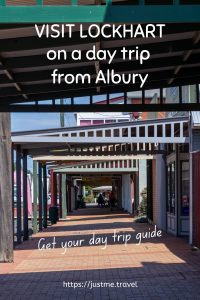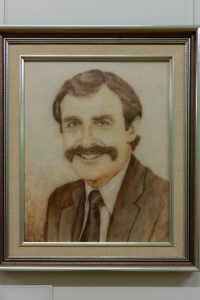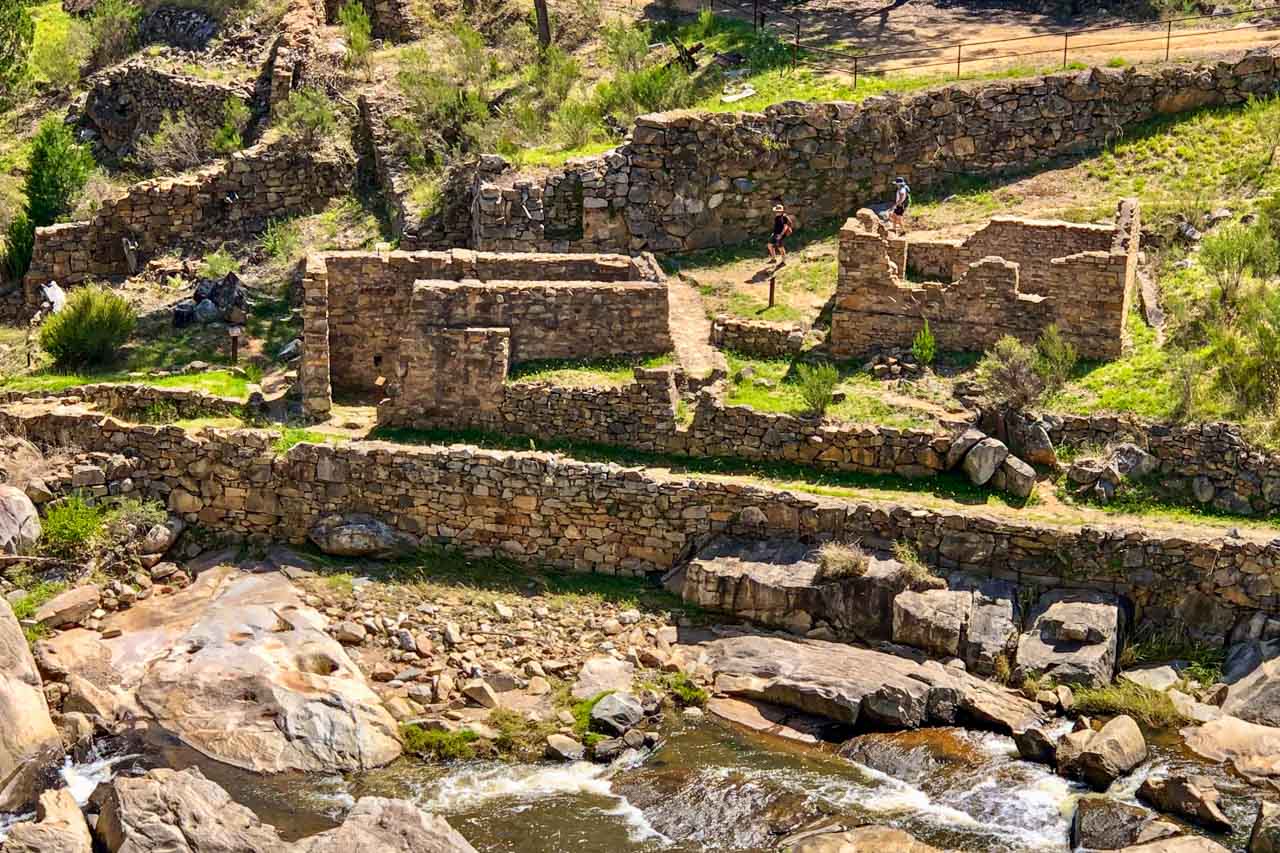Lockhart – where art, history, and metal come together for a great day trip destination from Albury. Join me on a day trip to Lockhart from Albury, a hidden…
Lockhart – where art, history, and metal come together for a great day trip destination from Albury.
The Riverina is an agricultural region in south-western New South Wales and home to the Murrumbidgee River (Australia’s second-longest river). The Riverina has an abundance of natural wonders and outdoor experiences. Lockhart is a prime example of all the Riverina has to offer – heritage architecture, a history steeped in its pioneering past, outdoor sculpture galleries, unique wool art portraits, and bush trails.
Lockhart is a true hidden gem. I am amazed by the depth of history and art for visitors to explore and discover in such a small rural town (town population, 818 people; shire population, 3,119)).
I have lived in Albury for nearly 30 years and have not been to Lockhart prior to my initial day trip in October 2020. I was recently telling my daughter about all I have discovered in Lockhart. She wanted to know why we had never been there. I had no answer but promised we would take a day trip to Lockhart next time she’s in Albury.
Getting there
Albury is situated on the Murray River and a major regional city in New South Wales, Australia. The Murray River is Australia’s longest river and forms the border between New South Wales and Victoria.
The trip from Albury to Lockhart is a drive of 1 hour, 14 minutes (105 kilometres).
Lockhart is 43 minutes (64 kilometres) from Wagga Wagga.
The Big Kangaroo and Big Emu
About two kilometres from Lockhart, you will find these two sculptures of Australian icons in a paddock beside the road. Check out the joey in the kangaroo’s pouch.
The impressive Kangaroo and Emu sculptures stand roughly seven metres high. Residents created them over two days in 2011 during a series of community farm art workshops in Lockhart.
The Kangaroo and Emu sculptures have been constructed entirely from scape metal, including old ute and car bodies, 44-gallon drums, galvanised iron, and unused farm materials donated by locals. The sculptures are excellent examples of rural recycling where nothing is thrown away in case it may have a use in the future.
Things to do in Lockhart
The Lockhart Sculpture and Heritage Trail is Lockhart township’s overarching art and history discovery theme and includes all the things to do in this post.
Lockhart Shire has published a detailed brochure on historic Lockhart to assist you on your self-guided sculpture and heritage walk. Download a copy of the two-page Lockhart Sculpture and Heritage Trail brochure – an excellent resource.
Lockhart Verandahs
Lockhart is known as the ‘verandah town’ due to its main street lined with verandahs dating back to the Federation years (around 1890 to 1915). The wide shady verandahs and historic shop fronts were restored in the early 1990s and have earned the town’s architecture classification on the National Trust Australia (NSW) list.
Historic Etched Pavers
On the footpath below the verandahs on both sides of Lockhart’s main street are over 400 pavers with images etched on them. The etchings tell the story of the progress and history of the township and represent those families, past and present, who contributed to the district’s growth.
The etchings are a unique, historical legacy of the early life and times, and the families’ businesses in the district, from the illustrious pastoral years, through Federation and the wars, to a more recent past.
Farm Art Sculpture Trail
Lockhart’s Farm Art Sculpture Trail is an easy, flat walk taking you on an artistic journey around the town centre. Be amazed at the talent as you discover over 20 incredible sculptures on permanent display. The sculptures have been created from rusted and recycled farm materials and reflect the land’s natural elements.
Many of the sculptures are award-winning National Farm Art pieces from Lockhart’s annual Spirit of the Land Festival, a celebration of the resilience of those who live and work on the land.
My initial day trip to Lockhart in October 2020 (I have returned on two more occasions) was a suggestion to friends we check out the rusty farm art sculptures of which I had heard so much. We were not disappointed. I love this type of art and the open-air, public galleries in which they exist. I am in awe of the talent to create unique animal sculptures from bits of farm materials that look like the animals they are meant to represent. As we searched for sculptures (no Sculpture and Heritage Trail brochure on this first-day trip), I found myself excited with anticipation as I wondered what we would discover next.
Greens Gunyah Museum
The award-winning Greens Gunyah Museum is a wander through Lockhart’s heritage past. With its impressive collection of historical, traditional, and interactive exhibits, the story of Lockhart unfolds before your eyes.
The museum’s collection of historical artefacts, photography and machinery is extensive. Highlights include a telephone exchange, World War ll memorabilia, shearing memorabilia, an original slab hut, the old blacksmith, old town business histories, and vintage town footage. There is also a room dedicated to Tim Fisher – a former Deputy Prime Minister from the Lockhart region.
You will find Greens Gunyah Museum at 39 Urana Street, at the Narrandera end of Green Street (Lockhart’s main street). Entry to the museum is $5.00.
The artwork on the museum’s façade is “Click go the Shears” by Stuart Spragg and features in Lockhart’s Farm Art Sculpture Trail.
At the time of writing, the museum is closed indefinitely due to low visitor numbers and rising COVID-19 numbers. However, you can arrange a private visit to the museum. Refer to Lockhart’s Greens Gunyah Museum Facebook page for details on arranging a personal visit.
The museum is also home to the renowned Doris Golder Wool Art Gallery.
Doris Golder Wool Art Gallery
Local artist Doris Golder is one very talented artist. Her layered wool art is truly unique, the only pictures of their type in the world.
By using washed, combed, and undyed sheep’s wool, Doris has been able to create remarkably life-like portraits of well-known identities as well as landscapes. Each portrait took approximately three months to complete. The exception to this was the portrait of Fred Hollows, his wife, and his small children. This portrait took 18 months to complete due to the complexity of capturing the essence of the children.
Over 14 years, Doris created over 30 portraits, 26 of which are hung in Lockhart’s Doris Golder Wool Art Gallery.
I recently returned to the Doris Golder Art Gallery in Lockhart to renew my acquaintance with the artworks. I remain in awe of Doris’ extraordinary creative ability and the patience required to complete her artworks, especially in creating wrinkles.
Do you recognise the famous Australians in these four wool art portraits by Doris Golder? Answers at the end of this post.
The combined Greens Gunyah Museum, Doris Golder Wool Art Gallery, and Visitor Information Centre is staffed by volunteers who willingly share their wealth of local knowledge.
The $5.00 entrance fee to Greens Gunyah Museum includes entry to the Doris Golder Wool Art Gallery.
Pioneers Memorial Gateway
Pioneers Memorial Gateway is a tribute to Lockhart’s early settlers. It is situated at the entrance to Lockhart’s Showground on Urana Road.
The 22 life-sized replica bales of wool forming the columns of the entrance gates each bear the stencilled wool brand of the original sheep stations of Lockhart district.
Pastoral Shadows of Brookong
Pastoral Shadows of Brookong is a collection of sculptures and silhouettes created from rusty iron, scapes of metal, and other natural materials. The sculptures are designed to bring history to life, telling the story of Lockhart’s rural life in the 1880s, when Lockhart and the area to the west of the town was a vast sheep station.
Pastoral Shadows of Brookong is situated on the edge of town, on the road to Wagga Wagga, across the road from the Lockhart Motel. The unsealed path taking in the sculptures is an easy, flat 15-minute circular walk – longer, if, like me, you take lots of photos. As you stroll through the sculptures and silhouettes, you will meet settlers, stockmen, drovers, and swaggies, as well as sheep, farm dogs, and kangaroos. Accompanying each sculpture is signage detailing the sculpture’s name and artist.
Brookong was a huge sheep station in the district of 200,000 hectares. In 1888, the Shearer’s Riot at Brookong played a pivotal role in developing Australia’s political history.
Photos from left to right:
- Raymond the Swaggie – designed and constructed by Craig Lally
- Settler “Burt” Searching for Land by Myra and Tom Jenkins
- Swaggie “Fred” Looking for Work by Myra Jenkins, Neil Jeffries, and Des O’Connell
Water Tower Mural
Not silo art, which I am partial to, but the mural on Lockhart’s water tower is a remarkable piece of public art.
The mural features a cascading waterfall surrounded by many of the unique native fauna and flora found in the local landscape. The mural was painted in 2018 by Blue Mountains artists Scott Nagy and James Birkner (Krimsone) using spray cans.
Set close to Lockhart’s historic main street (Green Street) in a pretty, small park, the water tower mural is easily accessible. You will find clean public toilets next to the water tower.
Latte Da Coffee Bar
All this walking will make you thirsty and hungry.
You are not spoiled for choice for cafes in Lockhart. However, Latte Da Coffee Bar is an excellent choice for breakfast, brunch, lunch, or to relax with a cake and coffee in the cafe’s indoor or outdoor setting. Takeaway is also available.
Offering fresh food – gourmet sandwiches, toasted Turkish rolls, pies and sausage rolls, cakes, and slices – Latte Da is located at 133 Green Street (Lockhart’s main street through town). Don’t forget to check out the Specials Board. I recommend the wraps.
The cafe is open 8 am to 4.30 pm Monday to Friday, 8.30 am to 1 pm Saturday, and closed Sunday.
Other activities:
Galore Hill Scenic Reserve
Just 15 kilometres north of Lockhart, off the Sturt Highway between Narrandera and Wagga Wagga, the top of Galore Hill Scenic Reserve is an impressive landmark in a seemingly never-ending flat but changing landscape.
The drive to Galore Hill Scenic Reserve is well signposted, and the gravel road from the Sturt Highway to the top is well maintained. Near the top of the hill, you can continue left to the Summit and right to the Saddle. Travelling with a friend on a second visit to Lockhart, we headed to the Summit, the Lookout Tower and walking tracks.
The views from the top of Galore Hill of the surrounding countryside are stunning.
The Summit is well-appointed with toilets, picnic tables undercover and in the open, barbeques, and ample parking.
One walking track in the Reserve takes you to the caves used by the infamous bushranger, ‘Mad Dog’ Morgan, who terrorised the region in the early 1860s. We walked the Saddle Loop Trail – a 45-minute return from the Summit. The trail was a narrow, rocky gravel track through the Australian bush that hugged the side of the hill. We lost the track about halfway along the Saddle Loop Trail and had to return the way we had come.
Considering the state of the trail, I recommend a good level of fitness for the walk, and sturdy walking shoes or hiking boots are a must. A hat, water, sunscreen, and insect repellent are also essential. I got eaten alive by mosquitoes on one section of the Saddle Loop Trail.
On a day trip to Lockhart, you should make time to take a drive to Galore Hill Scenic Reserve to soak in the views. Walking one of the trails will best be left for another time if you want to get back to Albury before dusk to avoid hitting kangaroos. We plan to return to Galore Hill Scenic Reserve to walk the Morgans Caves Loop Trail from the Summit.
Download the Gore Hill Visitor Brochure.
Lockhart is a wonderful town where history, heritage, and art are forever intertwined. There is something for everyone with its Federation verandahs, historic etched pavers, pioneering history, unique wool art and rusty metal sculptures, and water tower mural. Lockhart deserves a visit. Don’t leave it for 30 years as I did! Make Lockhart your next day trip destination, and don’t forget to save this guide.
Disclaimer: This post contains no affiliate links. All views and opinions are my own and non-sponsored. Unless otherwise credited, all photos are my own and remain the copyright © of Just Me Travel 2020-2022.
Please leave a comment below to share your thoughts. My purpose in writing this post is to convince you to take a day trip to Lockhart. Have I succeeded?
Like this post? PIN it for later!
Are you looking for another day trip in New South Wales? Read the guide to Adelong…
> Adelong Day Trip Guide – the Snowy Valleys’ hidden gem in New South Wales
> WYMAH FERRY BORDER CROSSING, LOCAL HISTORY, VALLEY VIEWS – the best day trip guide
Author’s Note: Please check the latest travel restrictions before planning any trip, and always follow government advice.
The famous Australians in the four wool art portraits by Doris Golder are:
Left to Right:
- Tim Fisher – former Deputy Prime Minister and from the Lockhart region
- Paul Hogan – comedian and actor
- John Newcombe – former No. 1 world tennis player
- Fred Hollows – humanitarian eye surgeon









